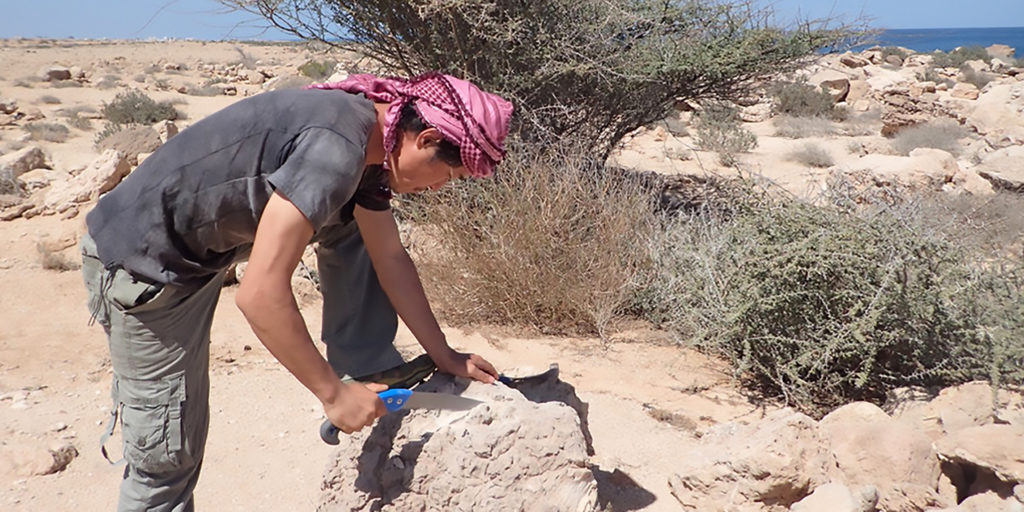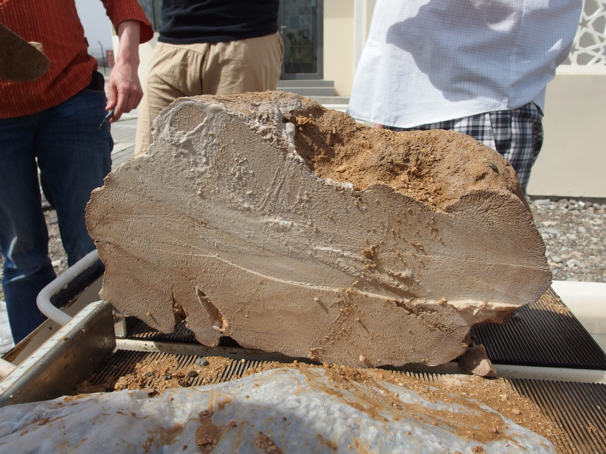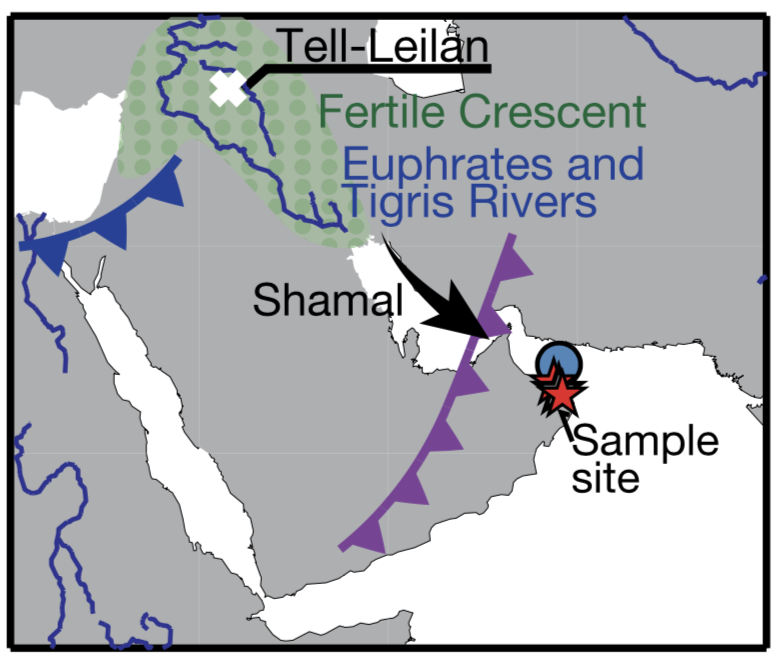
Posted on 10/30/2019 11:43:08 PM PDT by Fred Nerks
Fossil coral records provide new evidence that frequent winter shamals, or dust storms, and a prolonged cold winter season contributed to the collapse of the ancient Akkadian Empire in Mesopotamia.

The Akkadian Empire (24th to 22nd century B.C.E.) was the first united empire in Mesopotamia and thrived with the development of irrigation. Yet, settlements appear to have been suddenly abandoned ca. 4,200 years ago, causing its collapse. The area would also not experience resettlement until about 300 years later.
Past studies have shown that the Akkadian Empire likely collapsed due to abrupt drought and civil turmoil. However, the climatic dynamics which caused widespread agricultural failures and the end of an era have yet to be sufficiently explored.
Researchers from Hokkaido University, the KIKAI Institute for Coral Reef Sciences, Kyushu University, and Kiel University made paleoclimatic reconstructions of the temperature and hydrological changes of the areas around the archaeological site of Tell Leilan, the center of the Akkadian Empire. They sampled six 4,100-year-old fossil Porites corals from the Gulf of Oman, just directly downwind. The samples were aged by radiocarbon dating and geochemically analyzed to confirm they have not been significantly altered from their present state.

4,100-year-old Oman coral fossil
The coral data was then compared to modern coral samples and meteorological information. Although it is normal for the survey area to receive a significant amount of rainfall in the winter, the coral data suggests that, during the time of the empire’s collapse, the area suffered from significant dry spells. The data before and since the collapse are furthermore comparable to modern coral data, showing the dry spells would have been sudden and intense.

Map showing the sample sites (red stars) in respect to Mesopotamia (green dots) and wind direction. (Watanabe T.K. et al, The Geological Society of America. September 2, 2019)
The fossil evidence shows that there was a prolonged winter shamal season accompanied by frequent shamal days. The impact of the dust storms and the lack of rainfall would have caused major agricultural problems possibly leading to social instability and famine, both factors which have been previously associated with the collapse of the empire.
There is a clear correlation between ancient winter climate anomalies (green, blue, and red) and the civilization area of Mesopotamia and the Akkadian Empire (black) via time, with the right-hand side of the graph representing the present day. The anomalies are presented relative to present day values.
“Although the official mark of the collapse of the Akkadian Empire is the invasion of Mesopotamia by other populations, our fossil samples are windows in time showing that variations in climate significantly contributed to the empire’s decline,” said Tsuyoshi Watanabe of Hokkaido University’s Department of Natural History Sciences. “Further interdisciplinary research will help improve our understanding of connections between climate changes and human societies in the past.”

Tsuyoshi Watanabe (center) and his collaborators with the Mausoleum of Bibi Maryam at Qalhat in Oman in the background.
I rec’d this in FReepmail:
https://www.historyfiles.co.uk/FeaturesMiddEast/MesopotamiaLostCivilisations01.htm
The Sumerian civilization dwindled approximately 3500 years ago, replaced by peoples from the North and East; a replacement that was often the result of war. There are several lament texts that have been found, each mourning the destruction of a different Sumerian city. These texts are all from the same time period, causing one to wonder if the laments are simply reflections of humans at war, or truly those of wars of the Gods themselves - quarreling over their own ideologies.
http://www.gatewaystobabylon.com/myths/texts/lamentations/lamentur.html
LAMENTATION FOR THE DESTRUCTION OF UR
...The storm ordered by Enlil in hate, the storm which wears away the country,
covered Ur like a cloth, veiled it like a linen sheet.
On that day did the storm leave the city; that city was a ruin.
O father Nanna, that town was left a ruin. The people mourn.
On that day did the storm leave the country. The people mourn.
Its people(’s corpses), not potsherds,
littered the approaches.
The walls were gaping;
the high gates, the roads,
were piled with dead.
In the wide streets, where feasting crowds (once) gathered, jumbled they lay.
In all the streets and roadways bodies lay.
In open fields that used to fill with dancers,
the people lay in heaps.
The country’s blood now filled its holes, like metal in a mold;
bodies dissolved — like butter left in the sun...
http://www.gatewaystobabylon.com/myths/lamentations.htm
Hymns and Lamentations for Ancient Cities
Lamentation for the City of Eridu
•Lamentation for the City Nippur
•Lamentation for the City of Ur
•Lamentation for Turin and Sumer
•Lament for Unug
The "Curse of Agade" keyword:
Disclaimer: Opinions posted on Free Republic are those of the individual posters and do not necessarily represent the opinion of Free Republic or its management. All materials posted herein are protected by copyright law and the exemption for fair use of copyrighted works.